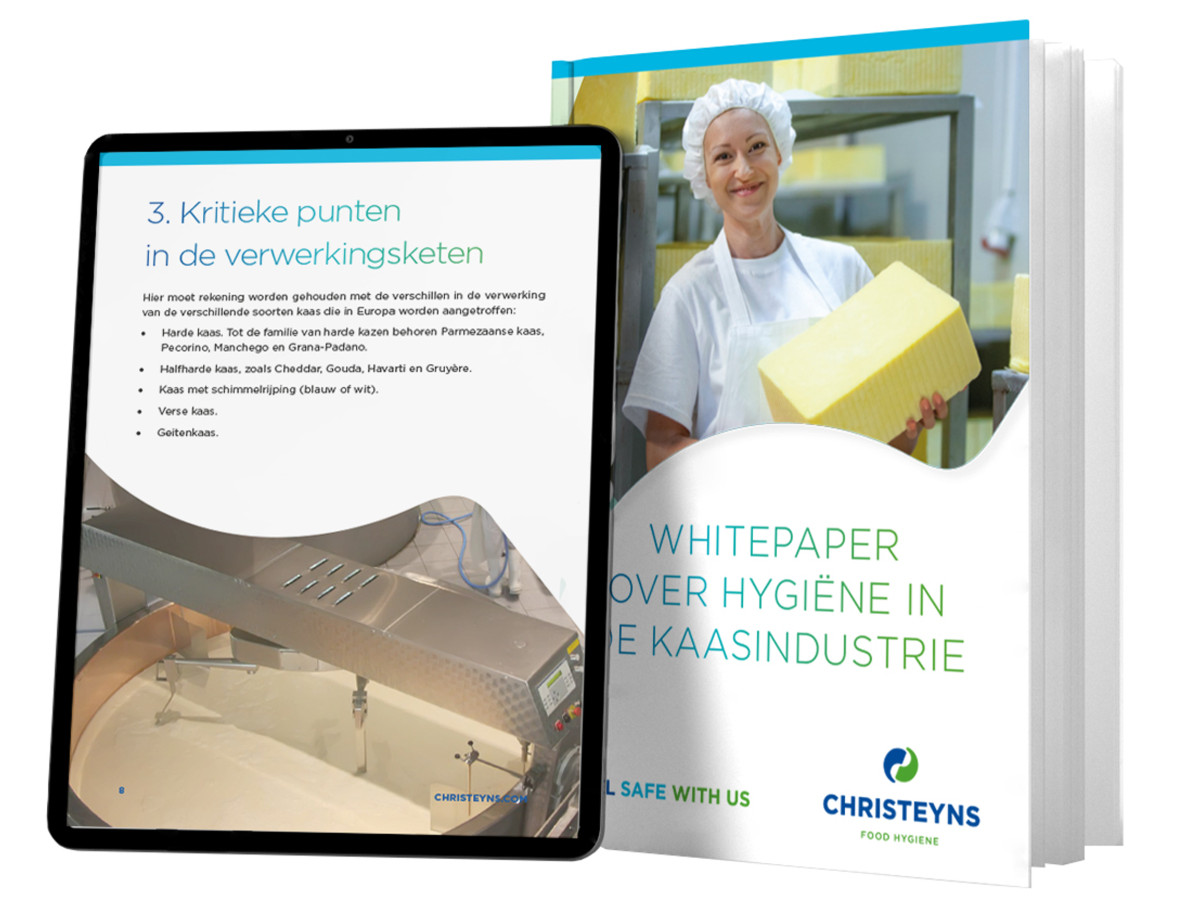
Cheese products are generally safe, but can be subject to bacterial contamination leading to food poisoning or cross-contamination with allergens. The presence of pathogenic or spoilage microorganisms can not only pose a danger to consumers, but also shorten the shelf life of the product.
Christeyns has published a free white paper, an e-book on the key factors for controlling microbiological contamination in cheese industry. This whitepaper also includes strategies to improve food safety and extend the shelf life of cheese, while maintaining its nutritional and organoleptic properties.
The cleaning and disinfection processes during cheese production must be very stringent to prevent product contamination. This white paper provides an overview of the critical points where these protocols must be tightened to avoid compromising the food safety of the product.
One such point is acidification. During this phase, the tanks in which the milk is stored must be kept as clean as possible to prevent inactivation of the starter culture or contamination of the milk. The coagulation phase, salting, but also molding are critical points. This is because unwanted fungi are a frequent source of contamination.
The white paper on hygiene in the cheese industry also elaborates on the cleaning and disinfection procedures required for each of the operations. This includes washing of molds, CIP cleaning, cleaning of open surfaces, membrane cleaning and disinfection. On the other hand, equipment for the automation of disinfection processes is also discussed: cavitation hygiene systems (HPC), automatic disinfection of belts or access controls to ensure the hygiene of personnel.
Source: Christeyns